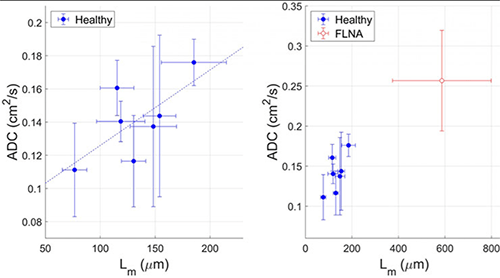Novel MRI Acquisition and Reconstruction Strategies
The Role of Inhaled Hyperpolarized Gas Use
Over the past 20 years, the sensitivity and specificity of hyperpolarized-gas (HP) MRI to detect early lung obstruction in asymptomatic patients has been demonstrated across a wide variety of pulmonary conditions including cystic fibrosis, asthma, interstitial lung disease and chronic obstructive pulmonary disease.
In 129Xe HP MRI techniques, the signal of 129Xe gas is enhanced many orders of magnitude over thermal equilibrium via spin exchange optical pumping, such that the gas may be inhaled and imaged via MRI during a single breath-hold. We have demonstrated that deficits in lung ventilation can be quantified, and the repeatability and stability of hyperpolarized-gas ventilation deficits support outcomes from 129Xe MRI as biomarkers for obstructive lung disease.
HP MRI has been reported in lung transplantation; in a preliminary report of helium-3 (3He) MRI. We hypothesized and demonstrated that 129Xe MRI could detect ventilation abnormalities in a pediatric HSCT population, including in children who could not perform reliable spirometry, and that quantitative 129Xe ventilation is sensitive to lung abnormalities post-HSCT before changes via traditional spirometry (i.e., 129Xe ventilation deficits were present in HSCT patients with normal spirometry), providing a means of early detection and intervention. To our knowledge, this is the first demonstration of 129Xe HP MRI in the HSCT population and detects a wide range of lung ventilation abnormalities in pediatric HSCT patients.




